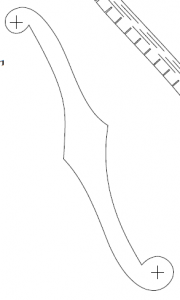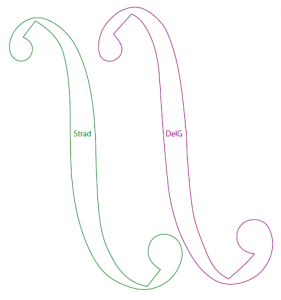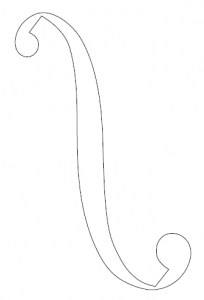I have been doing some research on archtop guitars and luthierie, because I would like to build myself an electric archtop semi-hollow guitar. Being that I believe all reasonably modern fabrication usually involves CAD, I have been trying to model the guitar in Autodesk Inventor. With any luck, I can avoid becoming a master craftsman at woodworking and use CNC techniques to fabricate my guitar with pretty good quality.
Archtop guitars are just what they sound like, Arch-topped! So, unlike your flat-topped acoustics that most people think of, we have a side profile of the guitar front (and back) that is not flat.
The trick was, I did not know what the shape of that arch really is, which is important to being able to model it. I did have a topo map of the guitar top on the plans, but I do not really trust it. It might be sufficient if one is only using hand tools and simpler power tools, to fabricate the guitar, but I am going all out modern CNC.
The Curtate Cycloid
After googling around a bit, I discovered this picture, showing this shape is a curtate cycloid. A regular cycloid line is formed by drawing a line from a point on a circle while rolling the circle along a straight line. Unlike the regular cycloid, a curtate cycloid is formed by drawing a line from a point on a smaller, concentric circle inside the larger rolling circle. Mathworld has a really good graphical explanation of how it works:
After watching that neat gif for a few minutes, it becomes readily apparent why Cremonese violin makers would choose this shape, the geometry is easy to draw. I found a tool for generating the shape, but its meant for printing out templates, not for adding to a CAD drawing. I have recently read that Autodesk Inventor 2013 has a new feature allowing mathematically defined equation curves, but since I just got 2012 installed, I think I will put that off a bit. Instead, I created a spreadsheet to generate points for a spline in Inventor. The math is pretty simple, read about it on the Mathworld website.
Download the Spreadsheet: CurtateCycloid
F-Hole Geometry
I had previously thought that the shape of the F-hole was largely an aesthetic thing, and I didn’t care to particularly for the shape of the F-hole on the set of plans I have. So I thought, “gee, maybe I can look up some F-hole placement and geometry and find something I like.” Well, to my surprise, the shape and position are apparently quite effective in shaping tone, but the method of determining the best shape is largely empirical. Since I am not really interested in the PhD level research involved for analyzing sound hole shapes, plus my guitar is semi-hollow and electric, perhaps it is a bit less critical.
I tend to like the Stradivarius shape, but I also like the diamond in the middle of the original pattern. I will probably combine them to get a design I like for my guitar. For comparison, here is the Gibson ES335 shape, the Stradivarius, Del Gesu, and Baumgartner F-hole hapes.
This really awesome violin building forum thread is where I got most of the links and info on cool F-hole stuff:
For Reference, I bounced through these interesting sites while trying to figure out how to model an archtop guitar:





